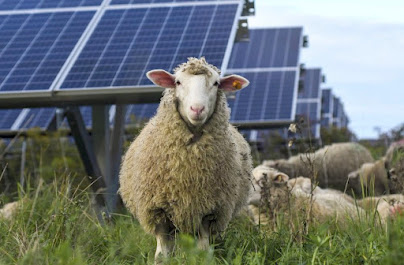Peppereornpero - In the same way, that the police use DNA to identify persons involved in a crime, the researchers in our lab are utilizing DNA, which stands for environmental DNA, to monitor invasive fish species in the Susquehanna River Basin that might be hazardous to local animals. Geneticists now can identify the species of fish living in a body of water simply by studying a sample of the water.
Why do studies on invasive fish species even bother? Because they often do not have any local predators, they have the potential to create disturbances in food chains, bring new illnesses, and/or overwhelm existing species. In our basin, the round goby, northern snakeheads, and blue catfish are the species that provide the greatest threat. Using this cutting-edge monitoring technique, SRBC scientists Luanne Steffy and Aaron Henning are leading the way in the Susquehanna Basin to track their spread.
If you think it could be intriguing, that's because you're right! And now, thanks to a newly launched interactive narrative map that includes a monitoring site dashboard, you have the opportunity to find out more about the work that we do with Edna. The dashboard displays, among other data for each monitoring site, the temperature of the water, the pH of the water, the turbidity of the water, and whether or not an invasive species is present. The narrative map emphasizes case studies and provides an explanation of the procedures that we employ to harvest eDNA via images, videos, and maps, among other media.
 |
| Mailchi.mp/srbc.net/susquehanna-river-basin-commission-fall-2022-newsletter#Fish |
Are there any circumstances in which discharges from defunct mines may ever be beneficial to aquatic life? In each given case Even if it's only a tiny bit? At a recent meeting held jointly by The Susquehanna Chapter of Trout Unlimited and the Loyalsock Creek Watershed Association, SRBC Mine Drainage Coordinator Tom Clark and EPCAMR (Eastern PA Coalition for Abandoned Mine Reclamation) Executive Director Bobby Hughes urged "yes."
Sullivan County, Pennsylvania is home to the headwaters of Loyalsock Creek, which is where the abandoned mine discharge cleanup work has been taking place. The restoration of native trout to their streams is a common occurrence once legacy discharges like these have been cleaned up. But unfortunately, that does not seem to be the case here. Acid and aluminum are the usual suspects when it comes to mine drainage, therefore people have been pointing the finger at them.
However, Clark, Hughes, and his coworkers have discovered other perpetrators, including warm water temperatures and the effects of acid rain. Clark cites data from the SRBC's Continuous Instream Monitoring program as evidence that suggests high stream temperatures during the summer months and low pH levels throughout the spring is preventing trout from returning to the stream.
During the warmest parts of the summer, the water in Loyalsock Creek may reach temperatures in the middle of the 80s, and this is even farther upstream from where the Connell Tunnel discharges. In addition, the pH on the same segment of the Loyalsock River may drop as low as the upper 4s at times of solid flow and snowmelt, especially in the spring. Both of these concerns are more significant than the minor increases in acidity and aluminum loadings that the Connell Tunnel discharges bring about.
Clark said that the temperature of the mine discharges when they enter the groundwater is around 50 degrees Fahrenheit. Clark said that because of this, the cold water that comes from the Connell discharges is perhaps of more significance to the Loyalsock than the modest quantity of acidity and aluminum that they provide to the river. Temperatures lower than 70 degrees Fahrenheit and a pH level higher than 6 are ideal for native trout.
Clark and Hughes recommend that the Loyalsock Creek Watershed Association and the local chapter of Trout Unlimited investigate potential solutions to these two problems. Are there any streams that have been negatively affected by acid rain? In such cases, lime sanding of streams has shown to be an effective, low-cost, and straightforward remedy in other areas. When it comes to the problem with the high temperatures, are there any impoundments that may be to blame? The temperatures of the water might be lowered by installing streamside vegetation buffers, which would also provide shade.
Following the discovery of the factors that act as barriers to the growth of the trout population, the following phases include identifying potential solutions at specific locations and acquiring the necessary financing to implement those ideas.






